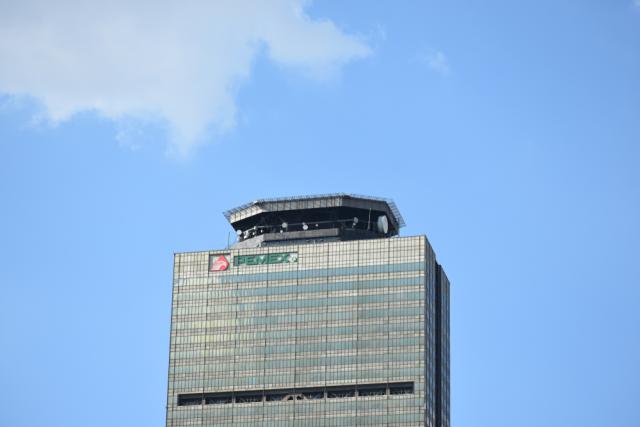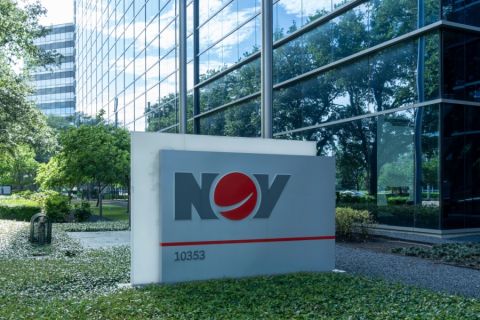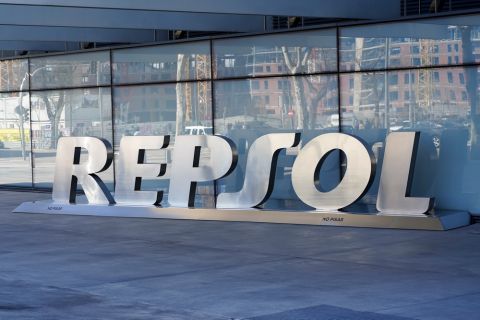
State-owned Petróleos de Mexico (Pemex) is sticking with an accelerated production strategy of new field developments, which has allowed the company to arrest overall declines in crude oil and condensates production. (Source: Shutterstock.com)
State-owned Petróleos de Mexico (Pemex) is sticking with an accelerated production strategy of new field developments, which has allowed the company to arrest overall declines in crude oil and condensates production.
Pemex’s strategic E&P focus on new field developments was implemented in 2019 under President Andrés Manuel López Obrador and focuses on areas with greater productive and economic potential.
The strategy depends on Pemex taking advantage of nearby existing infrastructure while incorporating early production from exploratory wells. The approach is meant to offset natural declines at its mature onshore and offshore fields, the company said during its second-quarter 2023 financial press release on July 28.
Pemex’s overall oil and condensates production averaged 1.88 MMbbl/d in the second quarter of 2023, up 7% compared to 1.76 MMbbl/d in the second-quarter 2022. Approximately 52% was classified as heavy oil and the remaining 48% as light. Pemex reported that 66% of production was located offshore and 34% onshore.
Mature fields con contributed 1.30 MMbbl/d, down 6% compared to the same year-ago quarter while new field developments contributed 0.58 MMbbl/d, up 56%.
Production from the new field developments comes from 41 new fields with 25 located offshore and 16 onshore. The top three new field development areas contributing to production include Quesqui (35%), Deep Tupilco (19%) and Ixachi (7%), followed by other fields (39%), according to Pemex.
RELATED: Pemex on Track to Grow Oil, Gas Volumes in 2023
Importantly for Pemex, production from its new field developments continues to rise as a percentage of total production. Of the company’s overall production in the second quarter, mature fields accounted for 69% (compared to the 79% of total production in second-quarter 2022). New field developments grew to 31%, compared to 21% in second-quarter 2022.
The processing of oil averaged 0.826 MMbbl/d during the second quarter of 2023 due to better operating performance at the Salina Cruz, Tula and Minatitlán refineries, Pemex said.
On the natural gas side, Pemex’ production averaged 4.05 Bcf/d in the second-quarter 2023, up 5% compared to 3.85 Bcf/d year-over-year. Approximately 53% of the gas was associated with oil and condensates production; 47% was considered non-associated; and 42% was located offshore and 58% onshore.
RELATED: Pemex’s Flaring Problem Not Going Away
Lower commodity prices deflate financials
Despite overall production rising in the second quarter compared to the same quarter last year, Pemex’s financial results were negatively impacted by lower commodity prices, according to data in the company’s second quarter press releases this year and last.
Additionally, ongoing commitments to the Mexican government continue to damper Pemex’ financial statements and weigh down on the company’s ability to reduce its debt. Pemex still holds the highest debt among the Latin American and Caribbean region’s national oil company peers such as YPF SA (Argentina), Petrobras (Brazil) and Ecopetrol SA (Colombia).
The average Mexican export price basket was $65.50/bbl in the second quarter, down 32.6% compared to second-quarter 2022. Gasoline was down 19.4% and diesel prices were down 25.1% in second-quarter 2023 compared to second-quarter 2022.
Financially, Pemex reported $24.3 billion in revenue and net income of $0.1 billion in the second quarter. Year-over-year, Pemex revenue was down 25% from $32.5 billion and its net income fell a staggering 99% compared to $14 billion in net income in second-quarter of 2022.
Massive debt load snowballing
Pemex’ total debt reached $110.5 billion at the end of June 30, the company said in its press release. Pemex’s debt exceeded the $100 billion mark each year starting in 2017 through the first half of 2023. During that time, Pemex’s debt reached a low of $103 billion in 2017 and a peak of $113.2 billion in 2020.
During Pemex’s second quarter 2023 earnings call with analysts, the company’s corporate finance director, Carlos Cortez, said the Mexico City-based company aims to return to reducing debt, which was the case in 2021 when debt fell to $109 billion and then in 2022 when debt fell to $107.7 billion.
Of Pemex’s debt, $105 billion, or 95%, is financial while $5 billion, or 5%, relates to monetized payments to the Mexican government. Approximately 78.7% of the debt is at a fixed rate while 21.3% is floating.
Around 70% of the debt is denominated in U.S. dollars while 17.5% is in Mexican pesos. Pemex also has debt in Euros as well as a number of other currencies.
Recommended Reading
NOV Announces $1B Repurchase Program, Ups Dividend
2024-04-28 - NOV expects to increase its quarterly cash dividend on its common stock by 50% to $0.075 per share from $0.05 per share.
Repsol to Drop Marcellus Rig in June
2024-04-28 - Spain’s Repsol plans to drop its Marcellus Shale rig in June and reduce capex in the play due to the current U.S. gas price environment, CEO Josu Jon Imaz told analysts during a quarterly webcast.
US Drillers Cut Most Oil Rigs in a Week Since November
2024-04-26 - The number of oil rigs fell by five to 506 this week, while gas rigs fell by one to 105, their lowest since December 2021.
CNX, Appalachia Peers Defer Completions as NatGas Prices Languish
2024-04-25 - Henry Hub blues: CNX Resources and other Appalachia producers are slashing production and deferring well completions as natural gas spot prices hover near record lows.
Oceaneering Won $200MM in Manufactured Products Contracts in Q4 2023
2024-02-05 - The revenues from Oceaneering International’s manufactured products contracts range in value from less than $10 million to greater than $100 million.





